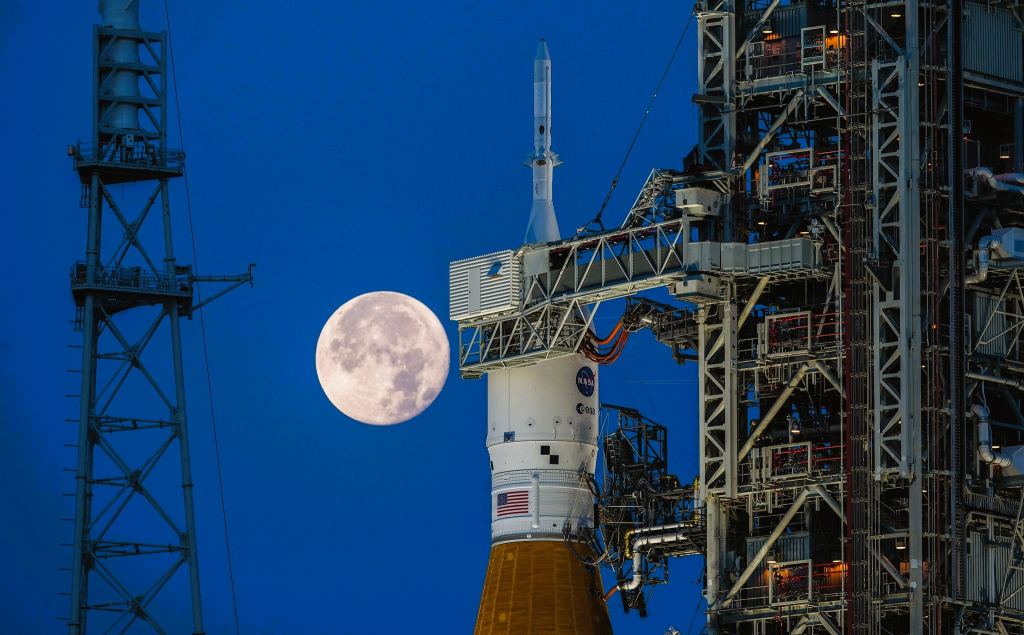Yeast Will Fill in for Humans on Artemis I, Soaking up a Lunar Mission’s Worth of Radiation
By Carolyn Collins Petersen
When Artemis 1 finally takes flight (possibly this Saturday), twelve bags of baker’s yeast will go along for the ride. Millions of these cells of Saccharomyces cerevisiae will experience deep space as it grows and reproduces. The yeast is a stand-in for actual people. The idea is to see what threat the radiation environment in deep space poses to living cells. The data from the experiment will point to how genetic engineering might help reduce damage to astronauts.
The project is called Deep Space Radiation Genomics. It’s the brainchild of a team at the University of Colorado’s BioServe Space Technologies Group. Its technical aim is to identify the metabolic and genomic pathways affected by microgravity and space radiation. This is a crucial experiment because there are still a great many unknowns about the effects of lengthy stays in deep space. Data from the mission will help members figure out ways to help astronauts avoid the effects of long-term radiation exposure.

It’s particularly important as NASA and other agencies work toward sending astronauts to the Moon or even Mars. And, the most recent data about humans in deep space is half a century old. “Nothing like this has happened for 50 years,” said Tobias Niederwieser, a research associate at BioServe and an engineer on the team. “The last time humans sent anything biological on a return trip to the moon was during Apollo 17 in 1972.”
Why Yeast?
While normal yeast cells aren’t exactly the same as cells in the human body, the tiny space explorers that BioServe wants to send are not your run-of-the-mill beer and bread yeasts. The case on Artemis contains 12,000 mutant strains of yeast for the experiment. It turns out they do share about 70 percent of their genes with humans, which makes them useful for study in space. Some of the organisms are missing certain genes, while others carry extra copies of certain genetic codes.
The yeast experiment will ride into space in a special container called the Peristaltic Laboratory for Automated Science with Multigenerations (PLASM). It will function once the Orion capsule is well beyond the protective Van Allen Belts that surround Earth. The PLASM box will first flood the yeast with nutrients. Over time, the yeast cells will grow and reproduce in a microgravity environment with higher radiation levels than on Earth or in low-Earth orbit. How they do that will give the research team a good idea of how the environment affects the cells.
Survival of the Fittest
The big question will be: which of those mutants will survive the trip and which won’t? These specially prepared cultures should open a window into how certain genes react to the harsh environment. Scientists will also look at which mechanisms they have for self-repair if they’re damaged. All that information should be useful to help scientists on Earth figure out ways to help astronauts avoid similar dangers. It will be important on all deep space missions moving forward.
“What we may be able to do is give future space explorers medication that enhances the efficacy of those DNA repair mechanisms,” said researcher Luis Zea, who heads the BioServe research team. “It’s kind of like an anti-oxidant that will help mitigate the effects of radiation.”
Yeast’s Risky Trip

The DSRG yeast cells will spend about a month and a half on their epic journey from Earth to the Moon and back again. They’ll sit quietly under one of the seats in the Orion capsule, doing their thing while the rest of the mission proceeds. For now, however, they’re waiting patiently atop the SLS rocket, waiting for the next launch attempt.
For More Information
Deep Space Radiation Genomics Project Page
Yeast Bound for Moon Will Provide Clues On How Radiation Impacts Astronauts
The post Yeast Will Fill in for Humans on Artemis I, Soaking up a Lunar Mission’s Worth of Radiation appeared first on Universe Today.

September 2, 2022 at 02:25AM
via Universe Today read more...

Post a Comment